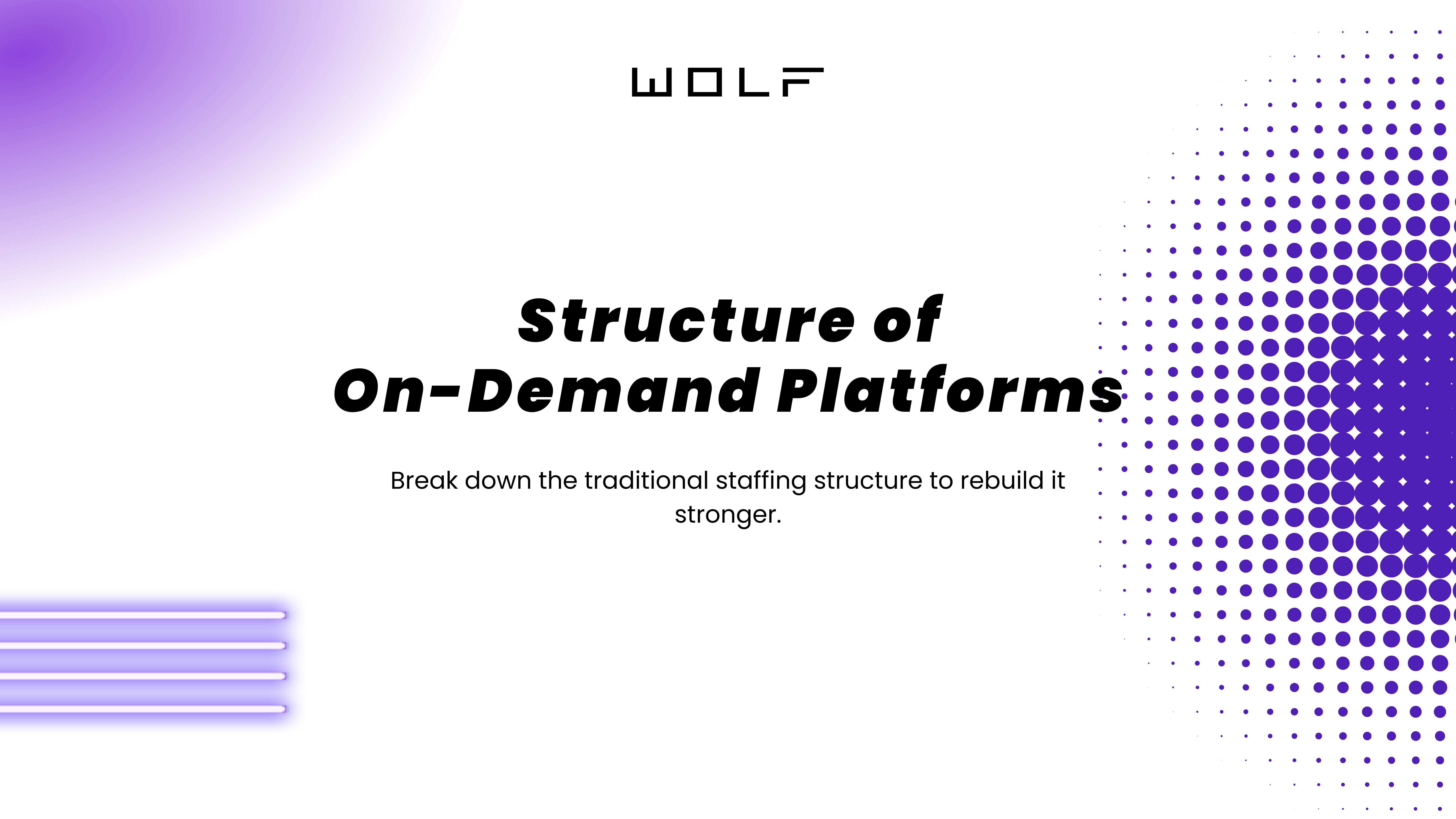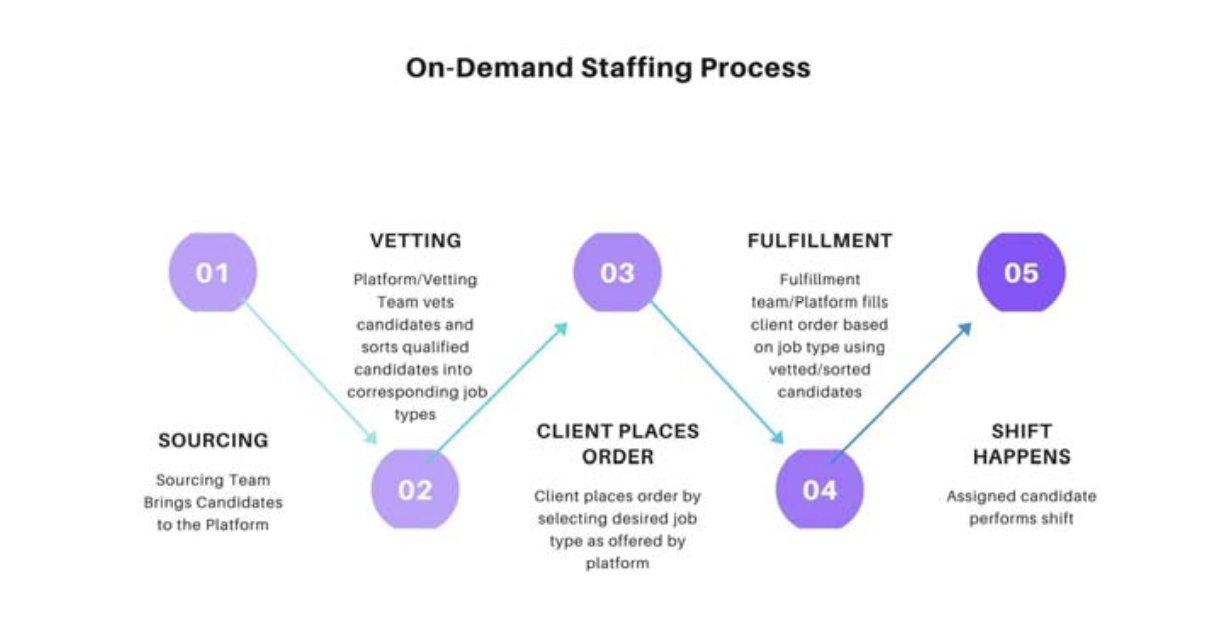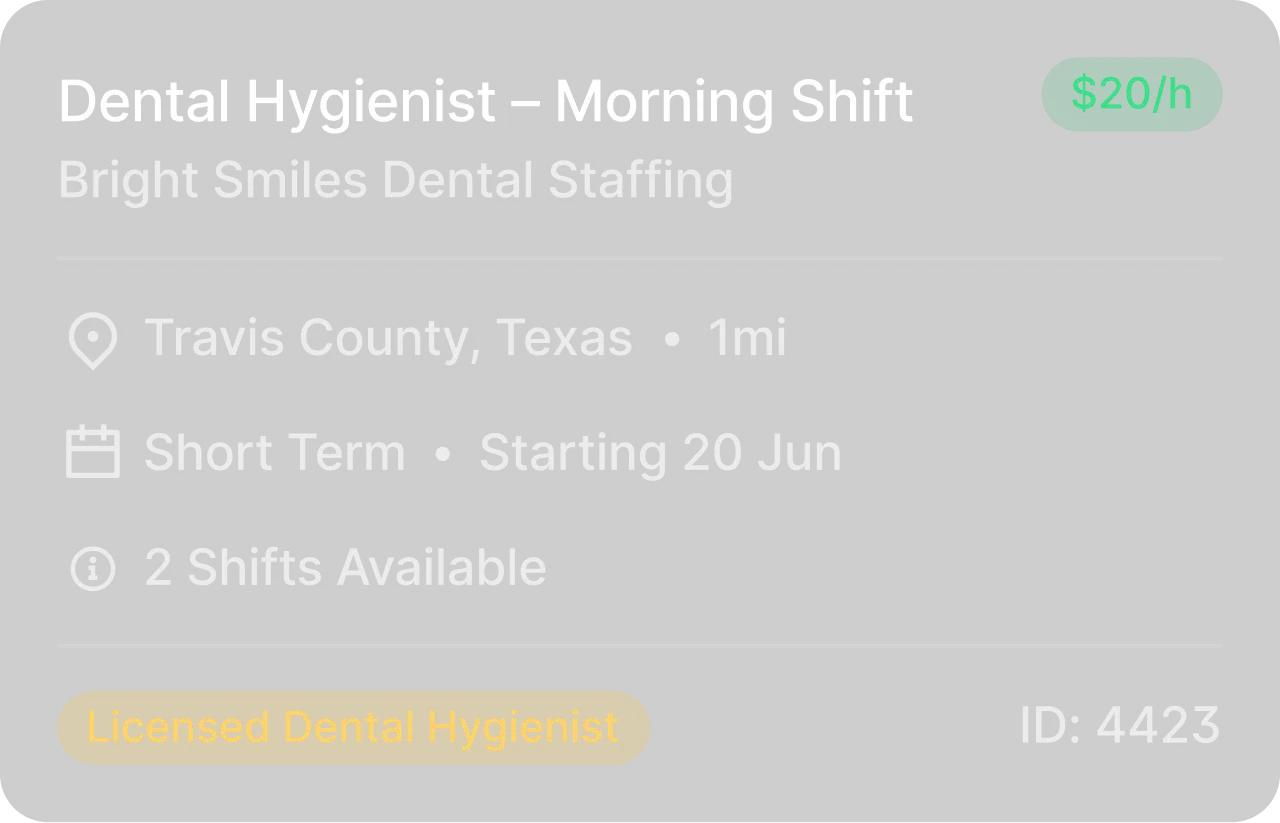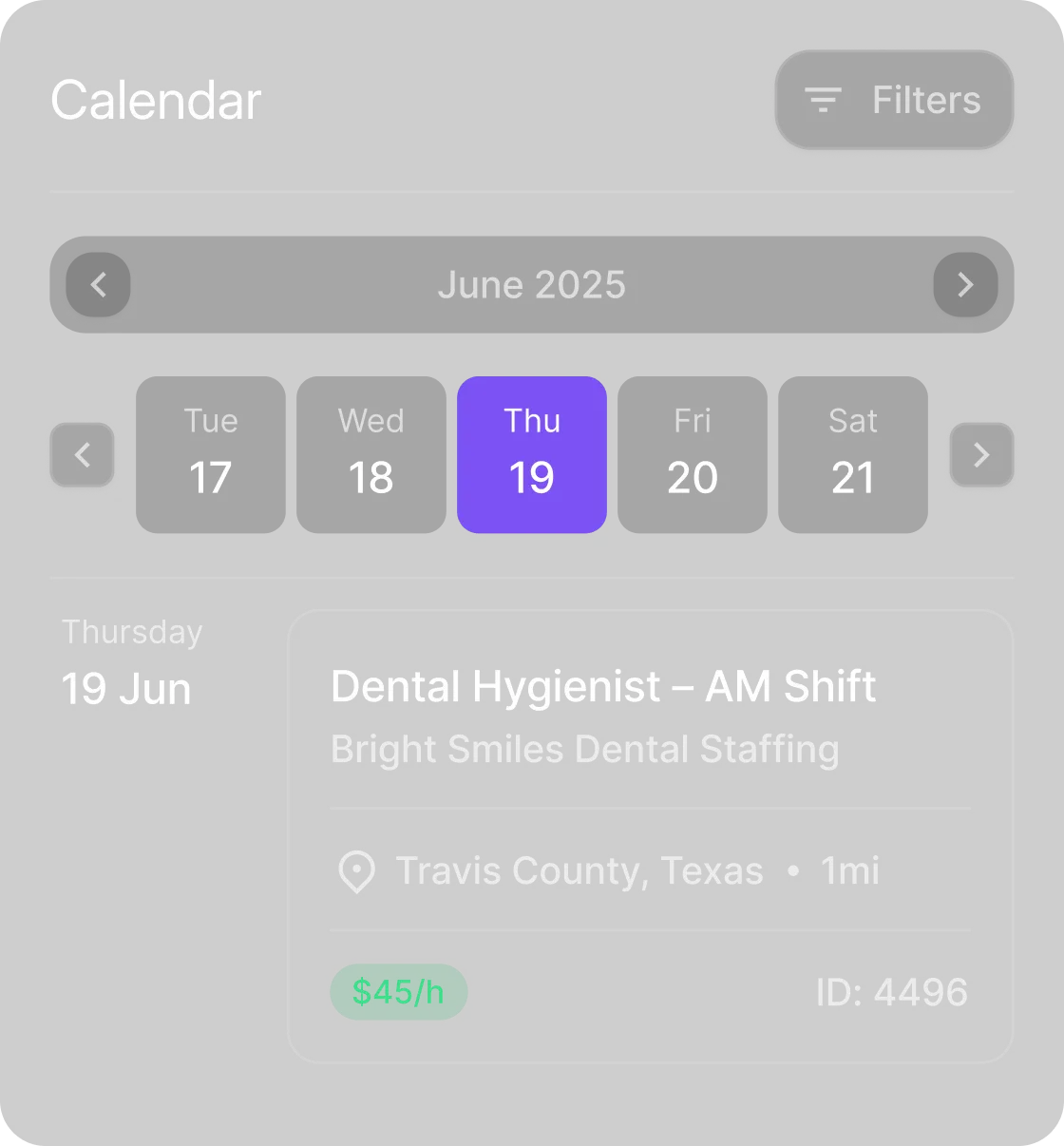
Design Process
On-Demand Structure: Division of Labor and Processes
19 Sep 2025

If you’ve read our post, Role of the Recruiter in Traditional Versus On-Demand Staffing Models, you are probably wondering since the recruiter’s role shifts with on-demand staffing, how this simplifies your overall business structure.
If you’re currently using a traditional temporary staffing model, you either:
- Have a recruiter who communicates with clients and sources candidates, in addition to vetting and matching.
- Have a client representative to manage the client’s job requirements and a sourcing specialist who sources candidates, with a recruiter conducting interviews and acting as a liaison between the two.
But how does this look when we introduce the on-demand platform into the process? The differences are:
- The recruiter is now focused on screening and vetting (see diagrams in Role of the Recruiter in Traditional Versus On-Demand Staffing Models post for visuals).
- The platform takes the client’s job request and has the ability to fulfill it as well, otherwise, you can opt for someone on your team to assign/fulfill orders.
This leaves 3 business/labor divisions:
- Marketing and Business Development: Sourcing candidates and clients to your platform
- Screening/Vetting: Qualifying candidates based on their profile and credentials
- Assigning/Fulfillment: Matching qualified candidates to shifts/jobs (if you’d rather not have the platform automatically do this)
With this makeup, the staffing process looks like this:

The upside is that you can adopt this model regardless of if you’re just starting out your business or already have people and processes in place. For example, if you don’t have a client representative, congratulations- you may not need to hire one. If you do, they would probably be a great candidate for business development since your team will now have more bandwidth to focus on attracting more clients.
Since these processes are compartmentalized, they operate independently and simultaneously. Your clients don’t need to wait for a recruiter to finish staffing a shift before moving on to the next request. This means you can staff 5 or 5,000 jobs with the same resources- the sky’s the limit with on-demand platforms.
Final Thoughts
The point is, on-demand platforms are built to simplify processes while setting your growth to new levels, not disrupt the blueprint of your company. Even if there are a few up-front adjustments, the juice can be worth the squeeze.
To learn more about Wolf’s on-demand platform for temporary staffing companies, book a demo today here.

Launch Your Own Branded Staffing Platform—Fast
Book a demo to see how Wolf automates matching, scheduling, and payments under your brand.



.png)

